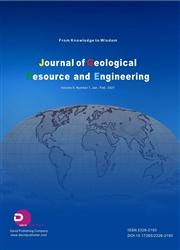Magmarizm and Ore Occurrences of the Kakheti and Tusheti Regions, Greater Caucasus, Georgia Republic
引用次数: 0
Abstract
Kakheti and Tusheti regions (Eastern Graeter Caucasus) of the Georgia Republic are mainly underlain by highly deformed Lower-Middle Jurassic shales, sandstones, and volcaniclastic rocks, intruded by numerous intrusive bodies of various composition. All units contain a variety of ore mineral deposit types and their surrounding zones of hydrothermal alteration. Continued geological and metallogenic researches in the past 30 years have led to important new information regarding the evolution of this region. Three main stages of magmatic activity are now clearly distinguished. Oldest magmatism comprises Early Jurassic events, related to extensional tectonism, which ranged from rhyolitic, through dacitic and andesitic, and to basaltic magma. Additional extensional processes (in Bajocian) were characterized by intrusion of a gabbro and diorite dike system into recently deposited late Early Jurassic-early Middle Jurassic formations. The final magmatic event was associated with Middle Jurassic folding and uplift during which multiphase diorite plutons were emplaced. Related intense hydrothermal activity was responsible for important polymetallic mineralization, with more than 100 recognized outcropping ore occurrences. A detailed study of 11 of these ore occurrences has indicated anomalous concentrations of gold, thorium, yttrium, cobalt, cadmium, and bismuth. In addition, several new and potentially significant ore mineral occurrences were discovered.格鲁吉亚共和国大高加索地区Kakheti和Tusheti地区的岩浆活动和矿石赋存
本文章由计算机程序翻译,如有差异,请以英文原文为准。
求助全文
约1分钟内获得全文
求助全文

 求助内容:
求助内容: 应助结果提醒方式:
应助结果提醒方式:


